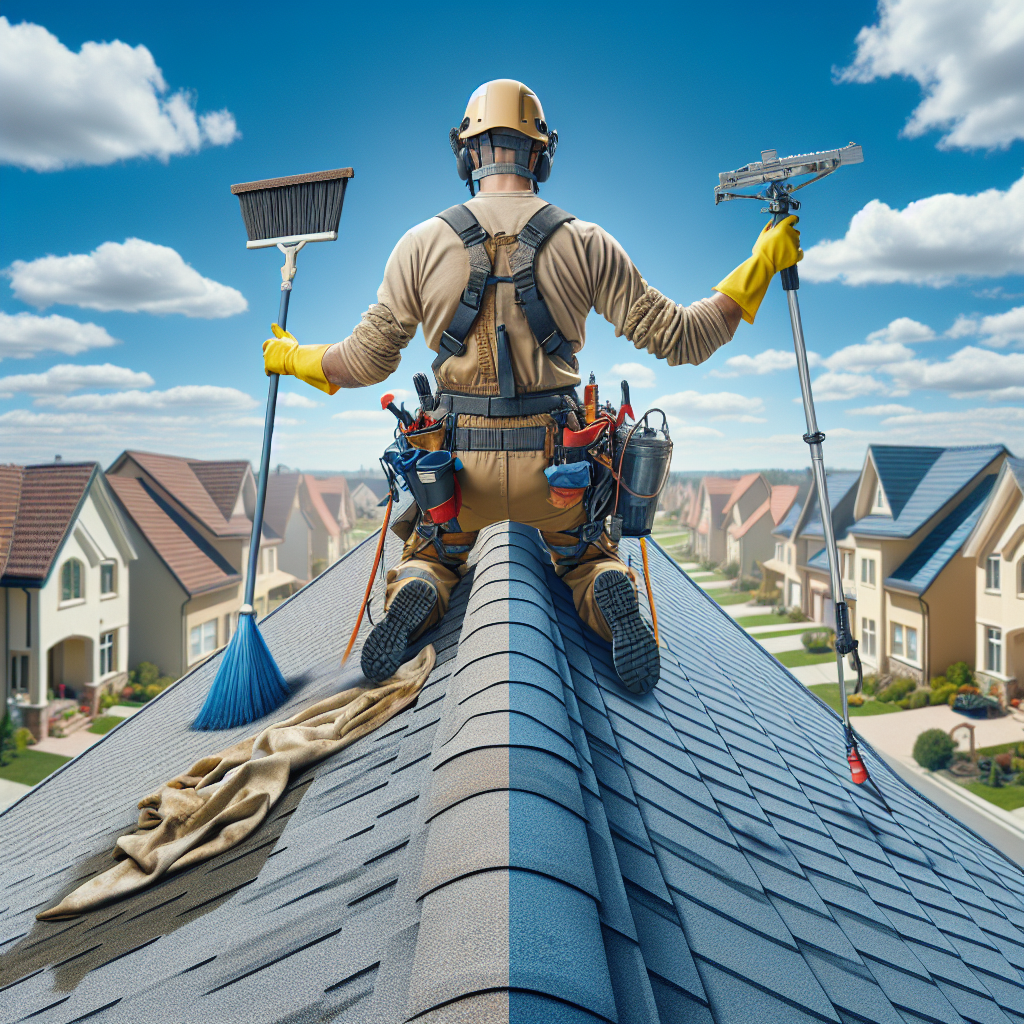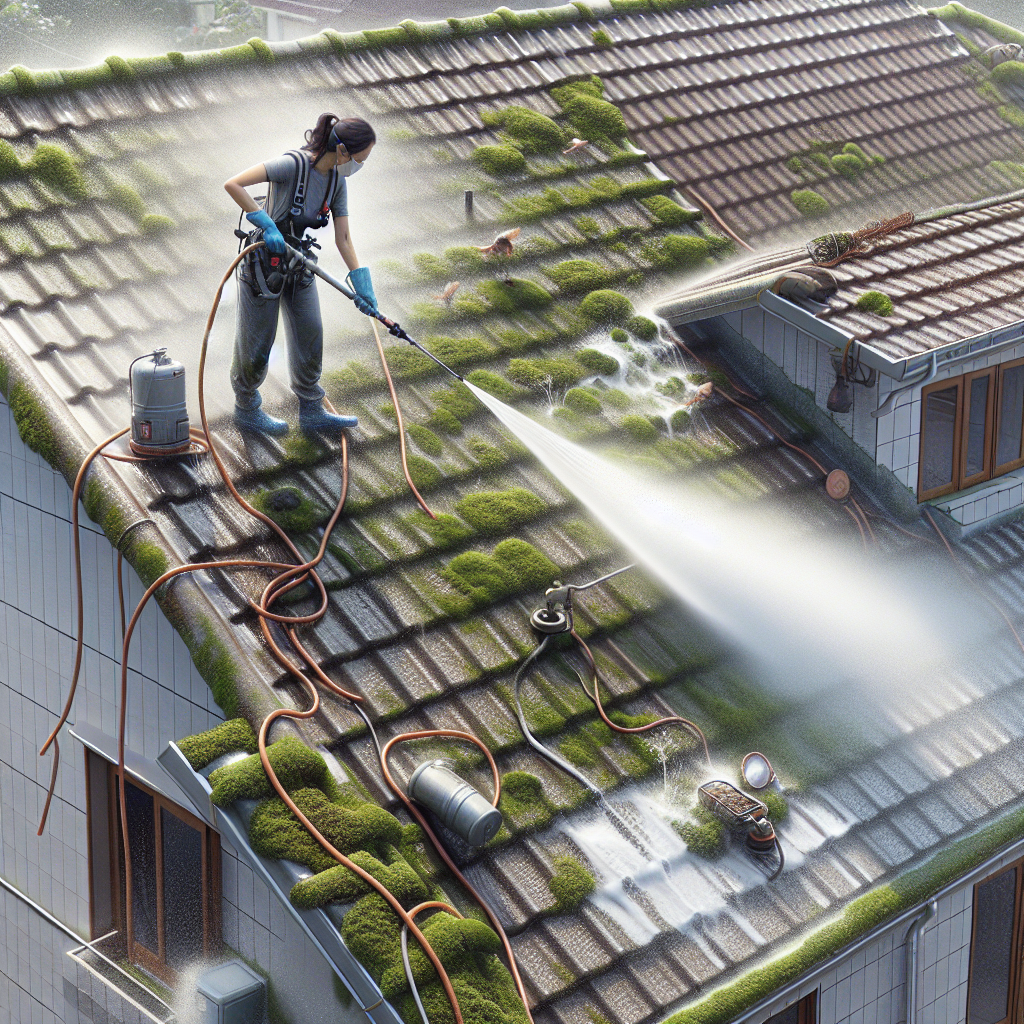How Long Does Roof Cleaning Take? Timely Insights!
Understanding the duration of roof cleaning is crucial for homeowners planning to maintain the appearance and longevity of their roofs. The process of cleaning a roof involves several steps, each varying in time depending on the size and condition of the roof. Generally, a professional and thorough roof cleaning can take anywhere from a couple of hours to a full day. Factors such as the square footage of the roof, the degree of dirt, moss, or algae accumulation, and the cleaning method used—whether soft washing or pressure washing—will significantly influence how long does roof cleaning take.
For instance, a small residential home may require less time compared to a large commercial property. Moreover, a roof that is regularly maintained will take less time to clean than one that has been neglected for years. It is also essential to account for the setup and preparation time, which includes securing the surrounding areas to protect landscaping and property from the cleaning solutions used.
To get a precise estimate for how long does roof cleaning take for your specific roof, Call or text 561-718-9851 and speak with a professional from PBC Pressure Cleaning. Our experienced team will assess your roof’s condition and provide you with a detailed timeline, ensuring minimal disruption to your daily routine while restoring the beauty of your roof.
Factors Influencing Roof Cleaning Times
The time required to complete a roof cleaning project can be affected by several critical factors. Firstly, the type of roofing material plays a pivotal role; for example, asphalt shingles may clean faster than tiles due to their smoother surface. Secondly, the level of soiling and growth such as moss, lichen, or algae can add complexity and time to the cleaning process. Particularly stubborn areas may need additional treatments or a more careful approach to avoid damage.
Another significant factor is the roof’s size and complexity. Large roofs or those with steep slopes, multiple levels, or hard-to-reach areas will require more time for thorough cleaning. Moreover, the cleaning method selected—whether it’s a gentler soft wash or a more powerful pressure wash—can also vary the timing. Soft washing, while less abrasive, may take longer as it often involves letting the cleaning solution sit to break down the grime.
Environmental conditions such as weather and temperature can affect the cleaning process as well. Optimal conditions allow for the quickest and safest cleaning; adverse weather can delay the process. Lastly, the professionalism and experience of the cleaning crew cannot be overlooked. Experienced technicians can work more efficiently, foresee potential issues, and adjust their cleaning methods accordingly, potentially reducing the overall time needed for a roof cleaning job.
Average Time Frame for Professional Roof Cleaning
Understanding the average time frame for professional roof cleaning is essential for homeowners planning to invest in this service. While the duration can vary based on the aforementioned factors, a standard residential roof cleaning generally takes between 2 to 5 hours. This estimate is for an average-sized home with a moderately soiled roof and straightforward accessibility.
For larger homes or those with more complex roofing systems, the cleaning process can extend to a full day’s work, especially if the crew needs to address significant moss or algae growth. In contrast, smaller roofs or those that are maintained regularly may only require a brief visit, possibly less than two hours.
It’s important to note that this time frame does not include setup or breakdown of equipment, nor does it account for any unforeseen challenges that may arise during the cleaning process. When hiring professionals, always ensure they perform a thorough assessment of your roof to provide a more accurate time estimate tailored to your specific situation.
Commercial roof cleaning projects, due to their scale and potential for more elaborate roofing structures, can take considerably longer. These may span several days, depending on the building’s size, the roof’s condition, and the cleaning method employed. The aim for any professional service, however, remains the same: to deliver a safe, effective, and time-efficient roof cleaning that restores the appearance and integrity of the roofing material.
DIY Roof Cleaning: Time Considerations
For the ambitious homeowner considering a DIY approach to roof cleaning, understanding time considerations is crucial. Taking on roof cleaning independently often means a significant time investment beyond what a professional team would require. Without commercial-grade equipment and experience, DIYers should expect to spend at least a full day or potentially a weekend on roof cleaning tasks.
Several factors contribute to this extended time frame. Firstly, individuals may need to research appropriate cleaning methods and safety precautions, acquire necessary equipment, and prepare the work area. Additionally, the cleaning process itself is more laborious without the efficiency of professional-grade tools. The application of cleaning solutions and the subsequent rinsing process must be carried out with great care to avoid damaging the roof or surrounding property. This meticulous attention to detail often lengthens the duration of the project.
Moreover, DIY roof cleaning involves frequent breaks to ensure personal safety, especially when working at heights or handling chemical cleaners. The learning curve for effective cleaning techniques also adds to the time, as does the cleanup and storage of equipment post-job.
While taking a DIY route may seem cost-effective, it’s vital to consider whether the time commitment and potential risks outweigh the benefits of hiring a professional service. A thorough assessment of one’s own capabilities, the complexity of the roof, and the availability of proper equipment should inform the decision to undertake DIY roof cleaning.
Maximizing Efficiency in Roof Cleaning Processes
To maximize efficiency in roof cleaning processes, it is essential to adopt a strategic approach. Whether conducted by professionals or DIY enthusiasts, an efficient roof cleaning process can save time and improve the overall effectiveness of the cleaning.
Preparation is the first step towards efficient roof cleaning. Clearing gutters, removing debris, and covering plants and furniture can prevent additional cleaning tasks post-wash. Choosing the right weather conditions is also vital; a mild, overcast day helps prevent the rapid evaporation of cleaning solutions, allowing them to work effectively.
Using the appropriate equipment can significantly enhance efficiency. For instance, pressure washers with adjustable settings allow for quick and thorough cleaning while minimizing the risk of roof damage. Similarly, employing specialized roof cleaning solutions that target specific types of growth, such as algae or moss, can lead to faster and more lasting results.
Another crucial aspect is employing the correct technique. Techniques such as soft washing can be more effective for certain roof types, as they combine safe water pressure with effective chemical cleaners. Properly sequencing the cleaning process—starting from the top and working downwards—ensures that dirt and debris naturally flow off the roof, reducing the need for re-cleaning areas.
Finally, regular maintenance reduces the need for intensive cleaning sessions. Regular inspections and spot treatments can keep the roof in good condition and extend the intervals between full-scale cleanings. This proactive approach not only maintains the aesthetic appeal of the roof but also helps in identifying potential issues before they escalate, further enhancing the long-term efficiency of roof maintenance.
When to Schedule Your Roof Cleaning for Best Results
Scheduling your roof cleaning is not just about finding a time that works for you; it’s about choosing the optimal season that can provide the best results for your roof’s longevity and appearance. Understanding the climatic patterns and growth cycles of organic matter in your region can help determine the ideal time to clean your roof.
In general, late spring to early summer is an excellent time for roof cleaning. This period often provides a good balance of moderate temperatures and minimal rainfall, which is conducive to effective cleaning and drying. Cleaning during this time also helps to remove debris and growths such as algae and moss that may have accumulated during the wetter, cooler months.
However, if you live in an area with a lot of trees, you might want to consider scheduling a cleaning in late fall, after most leaves have fallen. This helps ensure that your roof is clear of organic matter that could decompose and cause damage over the winter months.
It’s also wise to avoid scheduling roof cleaning during times of extreme weather conditions, such as heavy rain or very high temperatures, as these can hinder the cleaning process and even pose safety risks.
Remember, the goal is to maintain the integrity and aesthetic of your roof, avoiding unnecessary damage and ensuring that it serves its purpose for years to come. Regular, well-timed cleanings are instrumental in achieving this.
If you’re unsure about the best time to schedule your roof cleaning, or if you’re ready to arrange a professional service, don’t hesitate to Call or text 561-718-9851. Our team at PBC Pressure Cleaning is here to provide expert advice and deliver top-quality roof cleaning services that fit your schedule and extend the life of your roof.




Recent Comments